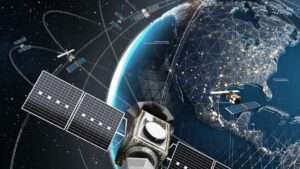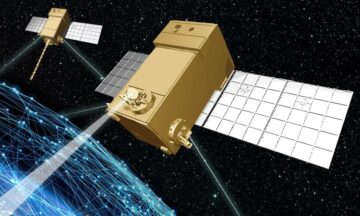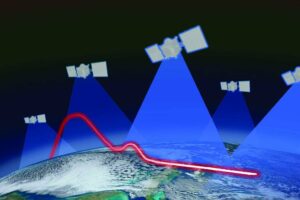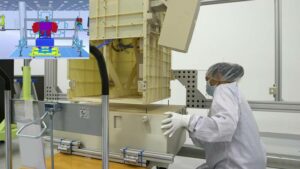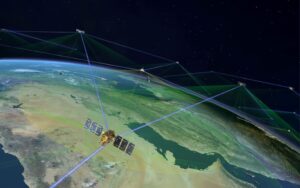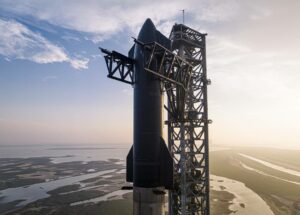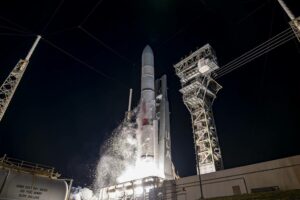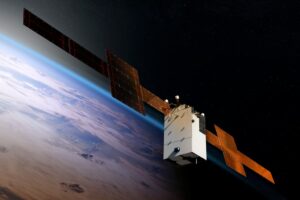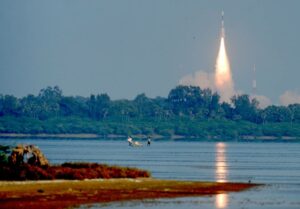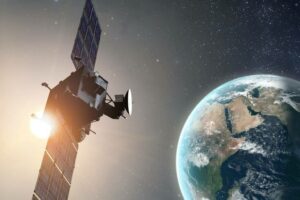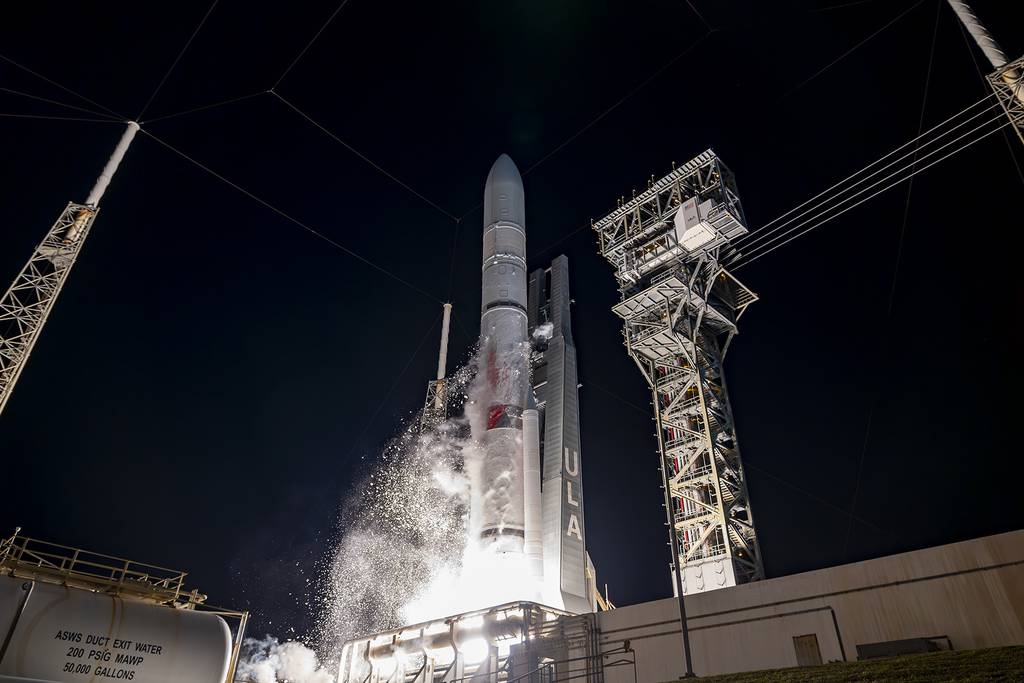
On Jan. 8, United Launch Alliance successfully launched its first Vulcan rocket. Driven by a goal to end ULA’s reliance on a Russian-built engine, which powered Vulcan’s predecessor, the launch capped almost a decade of work and U.S. government support to build an engine and rocket to succeed ULA’s venerable Atlas V and Delta IV launch vehicles.
With the success of Vulcan, there are now two U.S. companies — ULA and SpaceX — offering heavy-lift launch capabilities using U.S.-assembled rockets with U.S.-manufactured engines. These companies, hopefully joined soon by Blue Origin with its own heavy-lift rocket, will create competition in U.S. launch services and strengthen the ability of U.S. companies to compete with their Chinese peers for global customers.
Therefore, the Vulcan launch and engine development should be considered a success story for U.S. industrial policy.
Arguably, one decision made in the mid-1990s led directly to the Vulcan: the decision to use a Russian-made rocket engine, called the RD-180, as the primary engine for the Atlas III and, later, Atlas V rockets. Given the current geopolitical climate, it is impossible to imagine a U.S. defense contractor turning to Russia — or perhaps any foreign company — as the supplier for a component so critical to U.S. national security. But the world looked different then, and following the dissolution of the Soviet Union, the U.S. sought to stabilize the economies of what were hoped to be the Soviet Union’s democratic successor states, including Russia, and mitigate concerns about unbought space and rocket technology proliferating to countries like Iran and North Korea.
In 2014, 12 years after the first launch of an Atlas V, then a cornerstone of the U.S. national security launch architecture, Russia invaded Ukraine. In response to engine supply chain concerns resulting from Russia’s actions and worsening U.S.-Russian relations, Congress directed the U.S. Air Force to start a program to develop and field a new U.S.-designed engine and stop using the RD-180.
Though Congress mandated that the Department of Defense produce a replacement domestic engine for use on military launches starting in 2019, the first flight of the replacement engine — Blue Origin’s BE-4 — was the inaugural Vulcan launch. Meanwhile, in 2015, SpaceX’s Falcon 9 was certified for military launch contracts, and the company quickly established itself as a reliable government launch partner.
Though delayed by almost five years, the successful Vulcan launch and performance of the BE-4 engine is a U.S. space milestone worth celebrating, reflecting the strength of the U.S. space-industrial base. The rocket’s success is also a success of U.S. industrial policy, and is the result of significant government and private sector investment. Some of that investment went to develop a different engine, Aerojet Rocketdyne’s AR1, which was not used on Vulcan. There is, however, some interest in using the AR1, which was completed by Aerojet Rocketdyne, to power a different U.S.-made rocket, one produced by Firefly Aerospace.
But no matter AR1′s fate, investment in an RD-180 replacement has not only met its primary goal, disentangling U.S. national security launch capabilities from a Russian supplier, but also set the stage for a diverse and competitive U.S. launch provider ecosystem, which will benefit not only the U.S. government but commercial space customers in the U.S. and around the world.
Two companies now offer heavy-lift rockets assembled in the U.S. using American-made engines: SpaceX and ULA. Moreover, U.S. investment helped pave the way for a third capability, Blue Origin’s upcoming New Glenn heavy-launch vehicle, which will also use the BE-4 engine. Relatedly, other U.S. launch providers, such as Rocket Lab and Relativity Space, are also developing similar capabilities.
While SpaceX has demonstrated it can launch at scale, with close to 100 launches last year, now ULA and Blue Origin will have to demonstrate the same repeatability and consistency for Vulcan and BE-4. The goal should be multiple successful U.S. launch providers, offering cost-competitive launch services to global government and private sector customers, as this strengthens the U.S. industrial base, supports high-tech U.S. jobs and grows the U.S. space economy.
China is eyeing commercial customers — the first Chinese commercial launch happened last year — and is likely to follow the same playbook as it did with 5G technologies to capture a share of the global launch market. If U.S. launch companies are to compete and successfully win business around the world, they must offer better, cost-effective solutions than Chinese providers, who in many cases are state-owned or -backed enterprises. With the advent of the Ariane 6, Europe too will have a new heavy-lift capability that competes for many of the same customers.
While the U.S. government cannot subsidize every good idea from a space startup, it can make strategic investments that aim to not only meet national security requirements but also lay a foundation for the commercial success of American space companies in the U.S. and abroad.
Government funding and support to U.S. space companies can also encourage more private investment in these same endeavors, creating a flywheel effect and injecting more capital into initiatives seeking to develop advanced space technologies.
As the DoD nears the release of its first national defense industrial strategy, and soon pivots to implementation, policymakers should consider the Vulcan launch, albeit delayed, as a success story. In this case, the government had a clear goal to replace the weakest point of the supply chain for a critical U.S. national security capability. While meeting that primary objective, the government also strengthened the overall capabilities of the U.S. space industry and positioned it better to compete with China.
Policymakers should discern lessons learned along the decade-long journey that culminated in the Vulcan’s successful launch, and identify where and how to apply future investments to strengthen our security and increase the global competitiveness of U.S. companies.
Clayton Swope is deputy director of the Aerospace Security Project at the Center for Strategic and International Studies think tank. He previously led national security and cybersecurity public policy for Amazon’s Project Kuiper; served as a senior adviser on national security, space, foreign affairs and technology policy issues for a U.S. representative; and worked at the CIA’s Directorate of Science and Technology.
- SEO Powered Content & PR Distribution. Get Amplified Today.
- PlatoData.Network Vertical Generative Ai. Empower Yourself. Access Here.
- PlatoAiStream. Web3 Intelligence. Knowledge Amplified. Access Here.
- PlatoESG. Carbon, CleanTech, Energy, Environment, Solar, Waste Management. Access Here.
- PlatoHealth. Biotech and Clinical Trials Intelligence. Access Here.
- Source: https://www.defensenews.com/opinion/2024/01/11/how-the-us-replaced-russias-rd-180-engine-strengthening-competition/
- :has
- :is
- :not
- :where
- 100
- 12
- 1998
- 2014
- 2015
- 2019
- 70
- 8
- 9
- a
- ability
- About
- abroad
- actions
- advanced
- advent
- adviser
- Aerospace
- Affairs
- After
- aim
- AIR
- Air Force
- Alliance
- almost
- along
- also
- American
- an
- and
- any
- Apply
- architecture
- ARE
- around
- AS
- assembled
- At
- atlas
- base
- BE
- benefit
- Better
- Blue
- blue origin
- build
- business
- but
- by
- called
- CAN
- cannot
- capabilities
- capability
- capital
- capture
- case
- cases
- Celebrating
- Center
- chain
- China
- chinese
- clear
- commercial
- Companies
- company
- compete
- competes
- competition
- competitive
- competitiveness
- Completed
- component
- Concerns
- Congress
- Consider
- considered
- Contractor
- contracts
- cornerstone
- cost-effective
- countries
- create
- Creating
- critical
- Customers
- Cybersecurity
- decade
- decision
- Defense
- Defense Department
- Delayed
- Delta
- democratic
- demonstrate
- demonstrated
- Department
- department of defense
- deputy
- develop
- developing
- Development
- DID
- different
- directed
- directly
- Director
- discern
- diverse
- DoD
- Domestic
- driven
- economies
- economy
- ecosystem
- effect
- encourage
- end
- endeavors
- Engine
- Engineers
- Engines
- enterprises
- established
- Europe
- Every
- Facility
- falcon
- Falcon 9
- fate
- field
- firefly aerospace
- First
- five
- flight
- follow
- following
- For
- Force
- foreign
- Foundation
- from
- funding
- future
- geopolitical
- given
- Global
- goal
- good
- Government
- government support
- Grows
- had
- happened
- Have
- he
- helped
- Hopefully
- How
- How To
- However
- HTTPS
- idea
- identify
- if
- iii
- images
- implementation
- impossible
- in
- Inaugural
- Including
- Increase
- industrial
- industry
- initiatives
- International
- into
- investment
- Investments
- Iran
- issues
- IT
- ITS
- itself
- Jan
- Jobs
- joined
- journey
- jpg
- korea
- lab
- Last
- Last Year
- later
- launch
- launches
- lay
- learned
- Led
- Lessons
- Lessons Learned
- like
- likely
- looked
- made
- make
- many
- Market
- Matter
- Meanwhile
- Meet
- meeting
- met
- milestone
- Military
- Mitigate
- more
- Moreover
- multiple
- must
- Nasa
- National
- national security
- New
- no
- North
- North Korea
- nov
- now
- objective
- of
- offer
- offering
- on
- ONE
- only
- or
- Origin
- Other
- our
- overall
- own
- partner
- pave
- peers
- performance
- perhaps
- Pivots
- plato
- Plato Data Intelligence
- PlatoData
- Point
- policy
- policymakers
- positioned
- power
- powered
- predecessor
- previously
- primary
- private
- private sector
- produce
- Produced
- Program
- project
- provider
- providers
- public
- quickly
- reflecting
- relations
- relativity
- release
- reliable
- reliance
- replace
- replaced
- replacement
- representative
- Requirements
- response
- result
- resulting
- Reuters
- rocket
- Russia
- russian
- s
- same
- Scale
- Science
- Science and Technology
- sector
- security
- seeking
- senior
- served
- Services
- set
- Share
- should
- significant
- similar
- So
- Solutions
- some
- Soon
- sought
- soviet
- Space
- Space Companies
- space industry
- SpaceX
- stabilize
- Stage
- start
- Starting
- startup
- state-owned
- States
- Story
- Strategic
- Strategy
- strength
- Strengthen
- strengthened
- strengthening
- Strengthens
- studies
- succeed
- success
- success story
- successful
- Successfully
- such
- supplier
- supply
- supply chain
- support
- Supports
- tank
- Technologies
- Technology
- test
- than
- that
- The
- the world
- their
- then
- There.
- These
- they
- think
- think tank
- Third
- this
- to
- too
- Turning
- two
- u.s.
- U.S. Air Force
- U.S. government
- Ukraine
- union
- United
- upcoming
- us
- use
- used
- using
- vehicle
- Vehicles
- via
- vulcan
- was
- Way..
- went
- were
- What
- which
- while
- WHO
- will
- win
- with
- Work
- worked
- world
- worth
- year
- years
- zephyrnet

